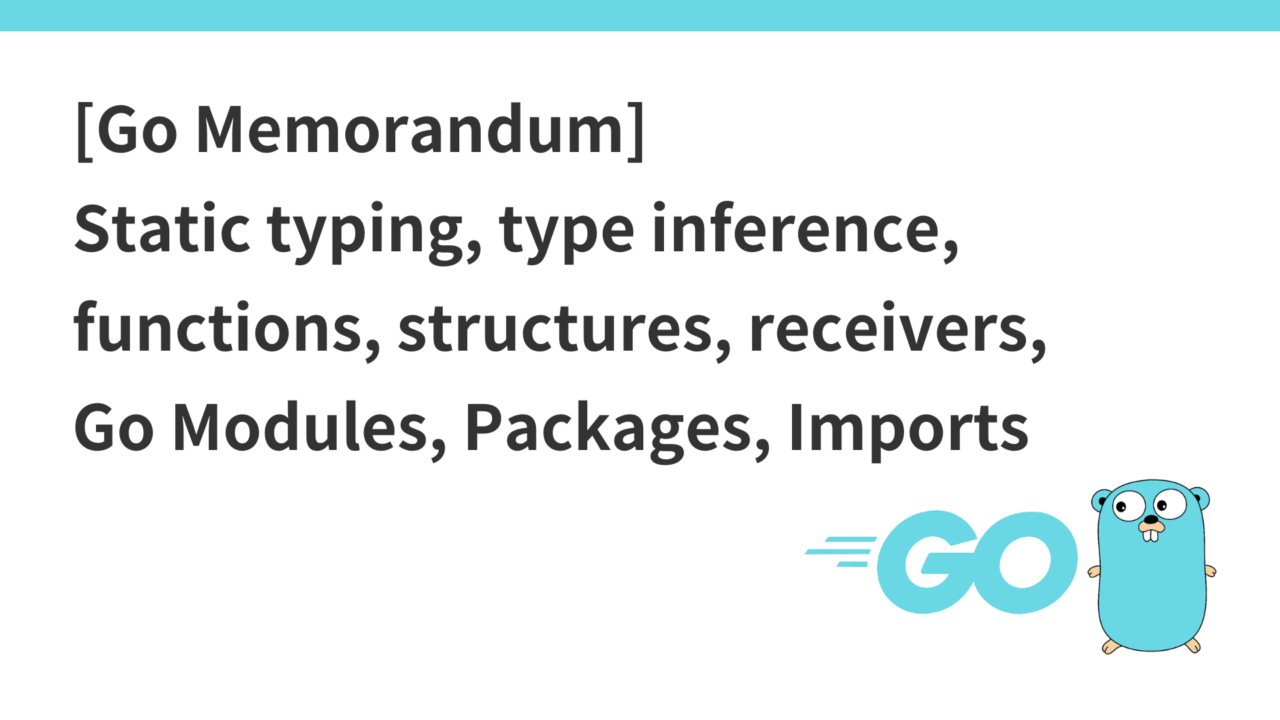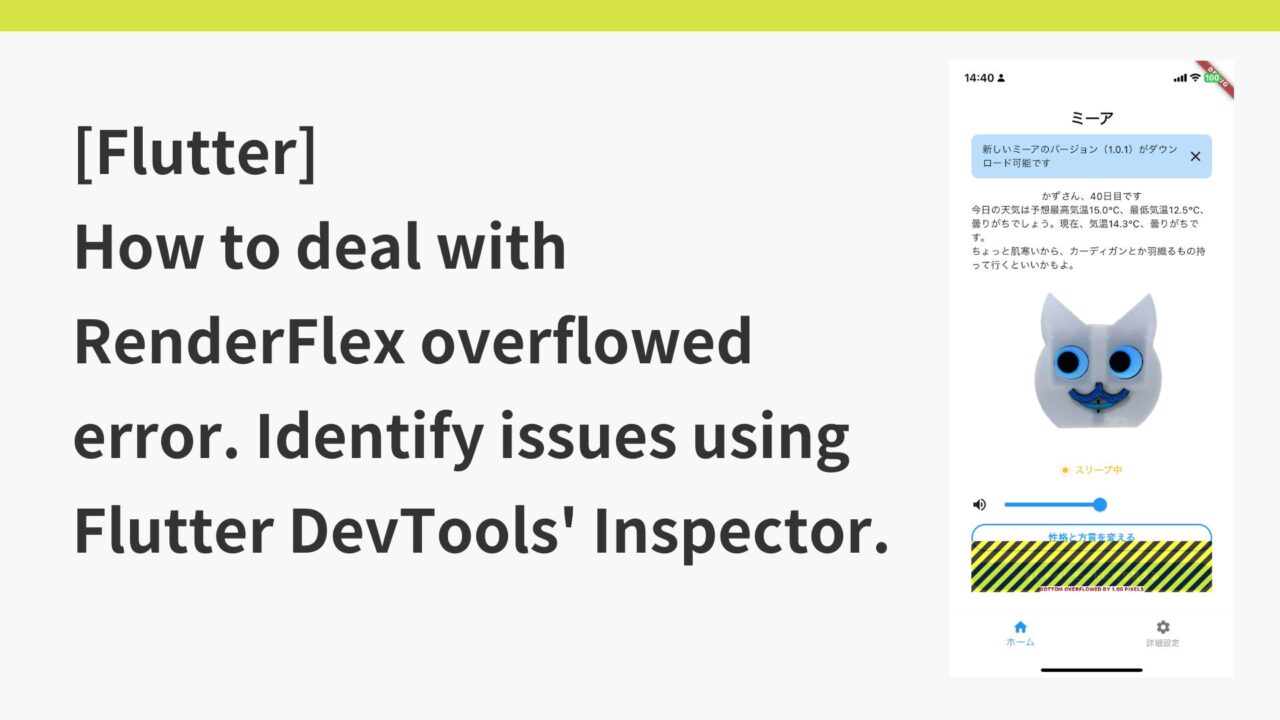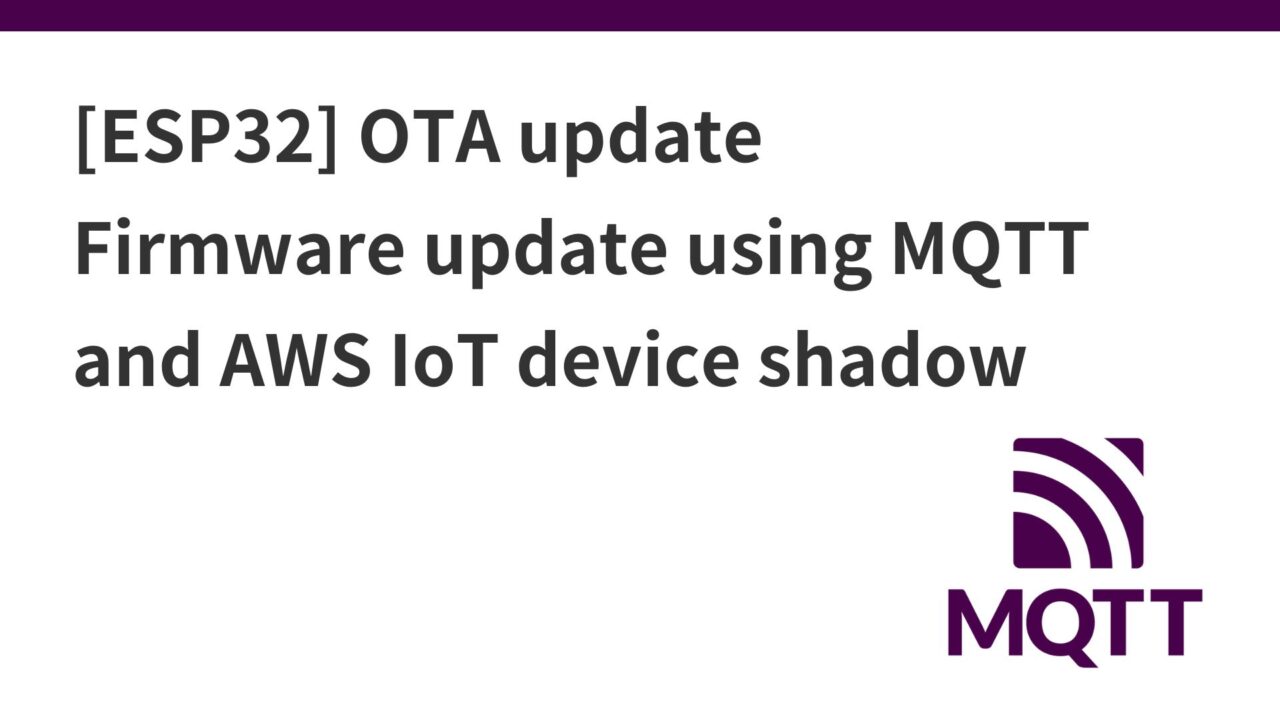I’ve started using the Go language, so I’m putting together a memorandum.
The official document is here: https://go.dev/doc/The
Japanese version of “A Tour of Go” is also easy to understand: https://go-tour-jp.appspot.com/list
With static typing and type inference
:= operator
Inside a function, you can use var short assignment statements instead of declarations := to make implicit type declarations.
Outside a function, a declaration starting with a keyword ( var, func, etc.) is required, and := implicit declaration with is not available.
type inference
When you declare a variable without specifying an explicit type ( := or var = ), the type of the variable is inferred from the variable on the right.
Go
i := 42 // int
f := 3.142 // float64
g := 0.867 + 0.5i // complex128Zero value
If a variable is declared without an initial value, it will be given a zero value.
Go
package main
import "fmt"
func main() {
var i int // 0
var f float64 // 0
var b bool // false
var s string // 空文字列
fmt.Printf("%v %v %v %qn", i, f, b, s) // 0 0 false ""
}type conversion
Unlike C, type conversion in Go requires explicit conversion.
If There’s a variable v and type T, convert the variable to the typeT by T(v).
Go
i := 42
f := float64(i)
u := uint(f)constant
Constants are declared in the same way as variables , const using keywords.
Constants can only be characters, strings, booleans, and numeric values.
Constants := cannot be declared using.
%v: Format specifier
Go uses format specifiers in fmt.Sprintffunctions (and functions in related packages). Go language package stands for “formatted I/O” or “formatted input/output”.fmt%vfmt
%vFormat specifiers are very general and can be applied to a wide variety of data types, from primitive data types (integers, floats, booleans, strings, etc.) to complex data structures (arrays, slices, maps, structs, etc.) used to output the value in the default format.
fmt.Sprintfreturns a formatted string, which you can store in a variable or use as input to other functions.fmt.Printfwrites a formatted string directly to standard output (usually the console).
Go
package main
import "fmt"
type Person struct {
Name string
Age int
}
func main() {
person := Person{Name: "Alice", Age: 30}
fmt.Printf("Person details: %vn", person) // Output:Person details: {Alice 30}
scores := []int{92, 85, 88} // declare an int type array
fmt.Printf("Scores: %vn", scores) // Output:Scores: [92 85 88]
greeting := fmt.Sprintf("Hi, %v. Welcome!", person.Name)
fmt.Println(greeting) // Output:"Hi, Alice. Welcome!"
}function
Functions start with the func keyword and require arguments and return types (static typing)
Write the type name after the variable name
Listed in the order of function name, arguments, and return value

If two or more arguments of a function are of the same type, you can omit all but the last type.
Go
func add(x, y int) int {
return x + y
}Functions can return multiple return values
Go
package main
import "fmt"
func swap(x, y string) (string, string) {
return y, x
}
func main() {
a, b := swap("hello", "world")
fmt.Println(a, b)
}Upper case (Public function)/lower case (Private function)
In Go, if a function or variable name starts with an uppercase letter, that function or variable is considered “exported” and accessible from other packages (Public function). This means that the name is “published” outside the package.
Conversely, names starting with a lowercase letter are accessible only within the package in which they are defined (Private functions). This means that functions and variables that you want to access from other packages must start with an uppercase letter.
Structure
A struct in the Go language structis a collection of fields (also known as properties or attributes) that plays a role similar to classes in many other programming languages. However, structures in Go differ from classes in that methods are defined outside the structure definition, and structures and methods are related through a “receiver.”
Fields in a struct . are accessed using dots ( ).
Association with method via receiver
Although methods in Go are not directly tied to structs, you can achieve class-like behavior by using a struct instance (or pointer) as a “receiver” for a method.
In the example below, the Greet method is defined using a receiver p of type Person. This allows the Greet method to be called for each instance of the Person type.
Go
package main
import "fmt"
//Declare a Person struct
type Person struct {
Name string
Age int
}
// Defining methods on the Person structure
func (p Person) Greet() {
fmt.Println("Hello, my name is", p.Name)
}
func main() {
// Create an instance of the Person structure
p := Person{Name: "Alice", Age: 30}
// Accessing methods using dot(.)
p.Greet() // Output: Hello, my name is Alice
// Accessing fields using dot(.)
fmt.Println(p.Name) // Output: Alice
fmt.Println(p.Age) // Output: 30
}pointer receiver
Using a pointer receiver means that the method is called through a pointer to an instance of that type.
With a pointer receiver, a method receives a pointer to an object, that is, the memory address of that object. This allows changes made within the method to be reflected directly in the original object, resulting in passing by address rather than by value.
Resize*Rectangleuses a pointer receiver ( ), so Rectanglechanges to fields within the method are reflected directly in variables mainwithin the function. rect
Go
package main
import "fmt"
type Rectangle struct {
Width, Height int
}
// Define a method using a pointer receiver
// This method can modify the Rectangle instance
func (r *Rectangle) Resize(newWidth, newHeight int) {
r.Width = newWidth
r.Height = newHeight
}
func (r *Rectangle) Area() int {
return r.Width * r.Height
}
func main() {
rect := Rectangle{Width: 10, Height: 5}
fmt.Println("Original dimensions:", rect) //Output: Original dimensions: {10 5}
fmt.Println("Area:", rect.Area()) //Output: Area: 50
// method is called to resize the rect
rect.Resize(20, 10)
fmt.Println("Resized dimensions:", rect) // Output: Resized dimensions: {20 10}
fmt.Println("Area:", rect.Area()) // Output: Area: 200
}Advantages of pointer receiver:
- Modifiability: If you change the fields of a structure through a pointer, the changes will be reflected in the original instance. With a value receiver, the changes passed to the method are a copy of the structure, so the changes remain in the local scope.
- Performance: When working with large structures, making copies is expensive. Pointers improve performance by allowing direct manipulation of data without copying it.
When using pointer receivers:
- When defining a method that changes the state of an object.
- When the object is large or changes frequently, performance is a consideration.
Go Modules and the go.mod file
Go modules are a system for managing project dependencies.
go.mod:The file is its central file, containing the name of the module and a list of other modules it depends on.
Module initialization :
Go
$ go mod init example.com/greetingsThis command go.modcreates a file and example.com/greetingssets the module name.
Managing dependencies :
Get packages: Get a specific version of a package and add it to your project
Go
$ go get cloud.google.com/go/texttospeech/apiv1Cleaning up dependencies: go mod tidy Remove unused dependencies and add required ones
Go
$ go mod tidyPackages
Go programs are made up of packages, and mainexecution starts from the package.
Package declaration :
go mod initIf the module name created with is example.com/greetings, declare it at the beginning of the file containing it package greetings. . This causes the functions and types in that file greetingsto be treated as part of the package.
Go
package greetingsImports: Factoring alias
You can use single or factored import statements to import packages.
Factored import statement: import multiple packages at once
Go
import (
"fmt"
"math"
)Using aliases: Import packages using aliases to avoid naming conflicts or refer to them by shorter names. You can use this alias to access the package’s functions and types.
In the example below (Google Cloud’s Text-to-Speech API),
texttospeechThe aliascloud.google.com/go/texttospeech/apiv1is set for the package. This allows all exposed functions and types within the packagetexttospeech.to be accessed using the prefix.client, err := texttospeech.NewClient(ctx):NewClientThe functiontexttospeechis defined in a package and called through an alias.
Go
package main
import (
"context"
"fmt"
"log"
texttospeech "cloud.google.com/go/texttospeech/apiv1" // import using an alias
)
func main() {
ctx := context.Background()
// create a client
client, err := texttospeech.NewClient(ctx)
if err != nil {
log.Fatalf("Failed to create client: %v", err)
}
defer client.Close()
}


コメント